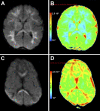Multidisciplinary prospective study of mother-to-child chikungunya virus infections on the island of La Réunion
- PMID: 18351797
- PMCID: PMC2267812
- DOI: 10.1371/journal.pmed.0050060
Multidisciplinary prospective study of mother-to-child chikungunya virus infections on the island of La Réunion
Abstract
Background: An outbreak of chikungunya virus affected over one-third of the population of La Réunion Island between March 2005 and December 2006. In June 2005, we identified the first case of mother-to-child chikungunya virus transmission at the Groupe Hospitalier Sud-Réunion level-3 maternity department. The goal of this prospective study was to characterize the epidemiological, clinical, biological, and radiological features and outcomes of all the cases of vertically transmitted chikungunya infections recorded at our institution during this outbreak.
Methods and findings: Over 22 mo, 7,504 women delivered 7,629 viable neonates; 678 (9.0%) of these parturient women were infected (positive RT-PCR or IgM serology) during antepartum, and 61 (0.8%) in pre- or intrapartum. With the exception of three early fetal deaths, vertical transmission was exclusively observed in near-term deliveries (median duration of gestation: 38 wk, range 35-40 wk) in the context of intrapartum viremia (19 cases of vertical transmission out of 39 women with intrapartum viremia, prevalence rate 0.25%, vertical transmission rate 48.7%). Cesarean section had no protective effect on transmission. All infected neonates were asymptomatic at birth, and median onset of neonatal disease was 4 d (range 3-7 d). Pain, prostration, and fever were present in 100% of cases and thrombocytopenia in 89%. Severe illness was observed in ten cases (52.6%) and mainly consisted of encephalopathy (n = 9; 90%). These nine children had pathologic MRI findings (brain swelling, n = 9; cerebral hemorrhages, n = 2), and four evolved towards persistent disabilities.
Conclusions: Mother-to-child chikungunya virus transmission is frequent in the context of intrapartum maternal viremia, and often leads to severe neonatal infection. Chikungunya represents a substantial risk for neonates born to viremic parturients that should be taken into account by clinicians and public health authorities in the event of a chikungunya outbreak.
Conflict of interest statement
Figures


References
-
- Porterfield JH. Antigenic characteristics and classification of the Togaviridae. In: Schlesinger R, editor. The Togaviruses. New York: Academic Press; 1980. pp. 13–46.
-
- Robinson MC. An epidemic of virus disease in Southern Province, Tanganyika Territory in 1952–53. 1. Clinical features. Trans R Soc Trop Med Hyg. 1955;49:28–32. - PubMed
-
- Lumsden WHR. An epidemic of virus disease in Southern Province, Tanganyika Territory in 1952–53. 11. General description and epidemiology. Trans R Soc Trop Med Hyg. 1955;49:33–57. - PubMed
-
- Hammon W, Rudnick A, Sather GE. Virus associated with hemorrhagic fevers of the Philippines and Thaïland. Science. 1960;131:1102–1103. - PubMed
Publication types
MeSH terms
LinkOut - more resources
Full Text Sources
Other Literature Sources
Medical

